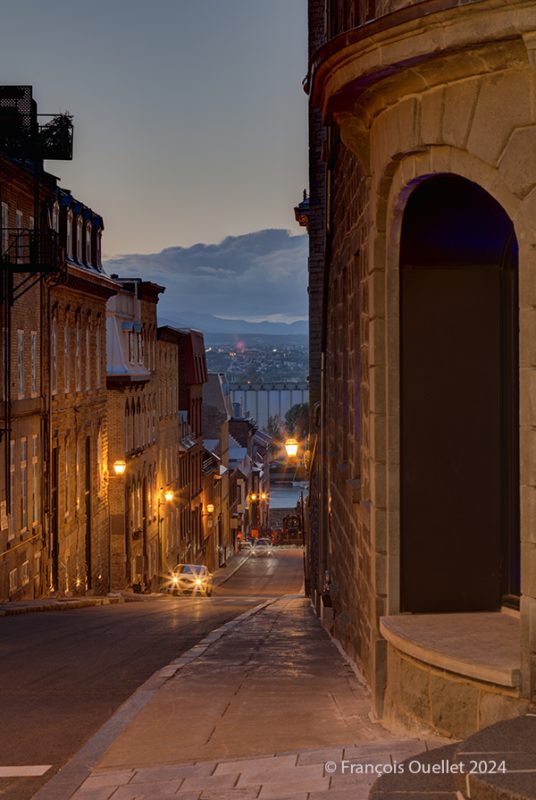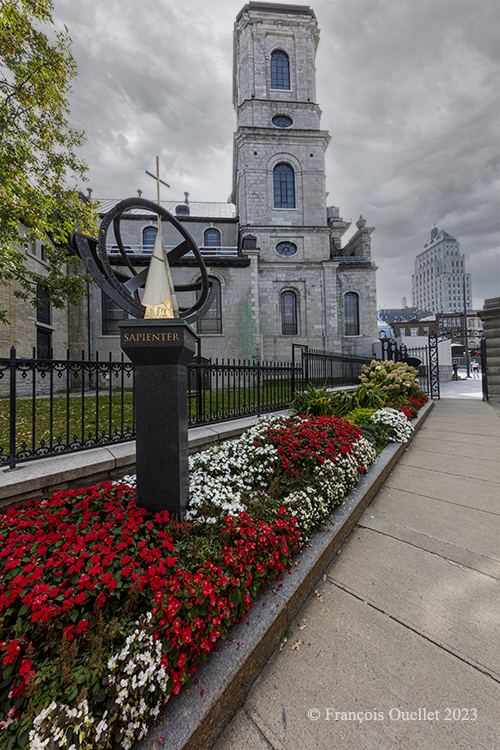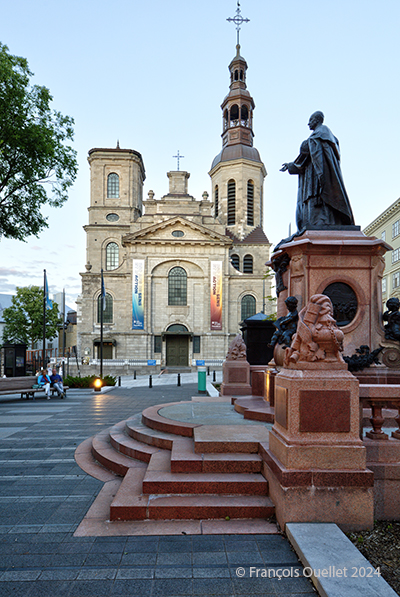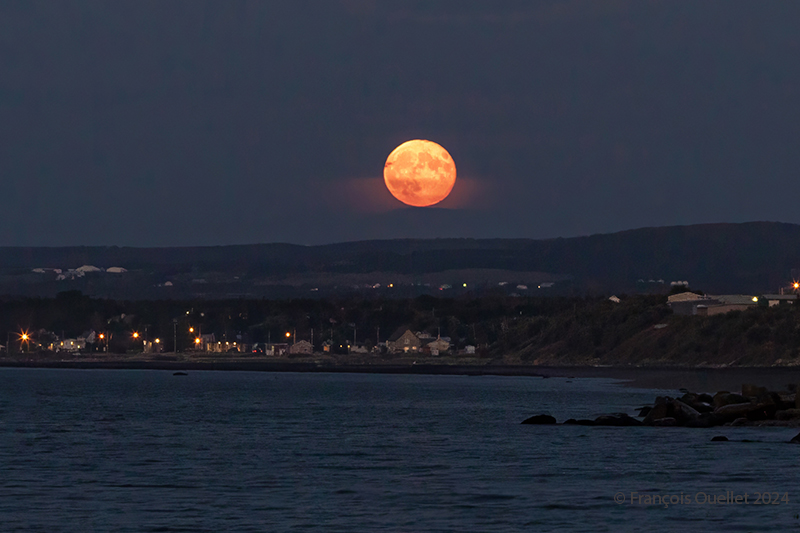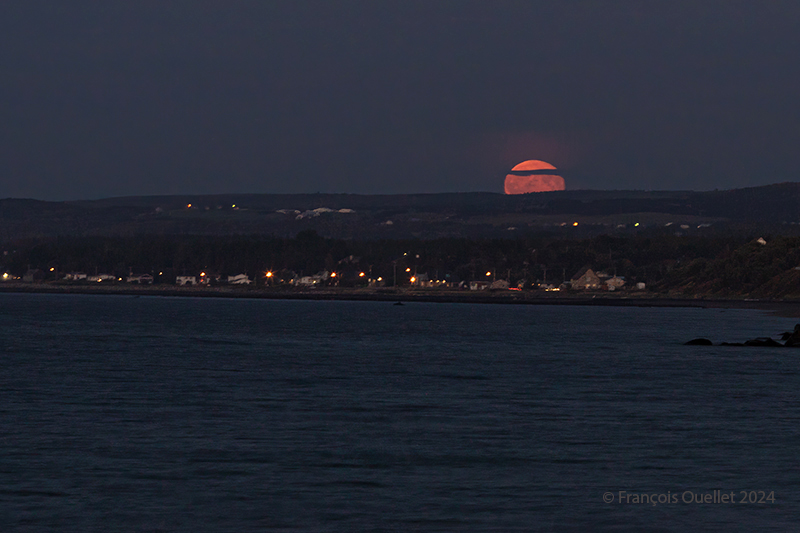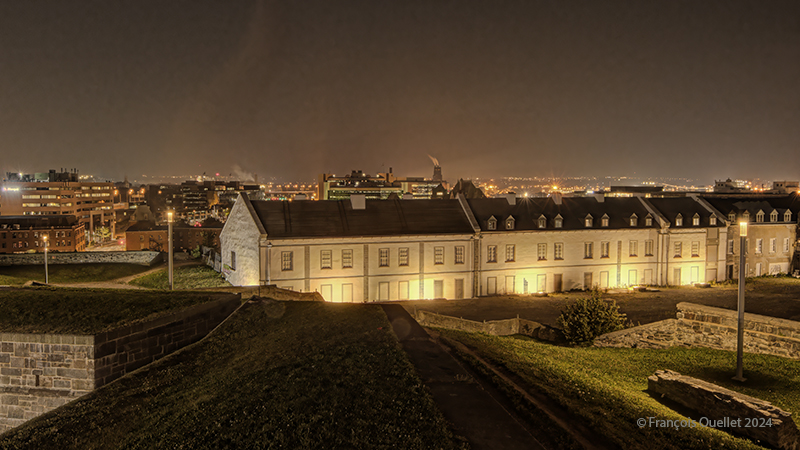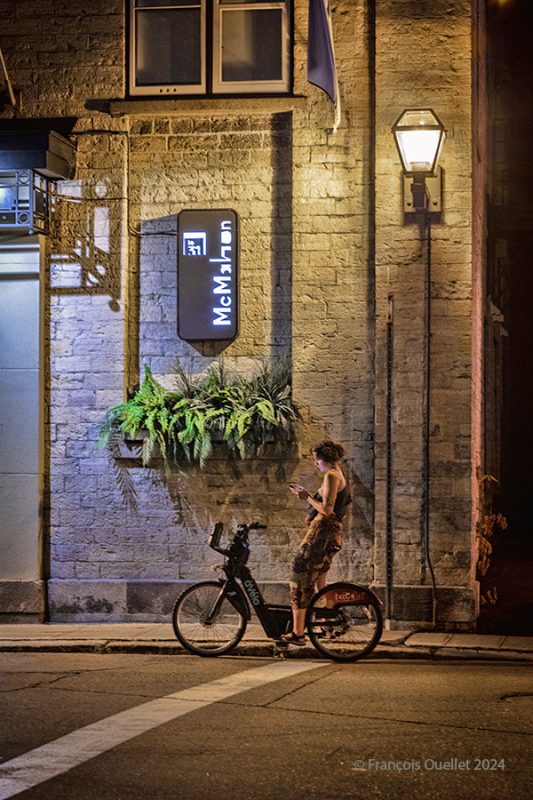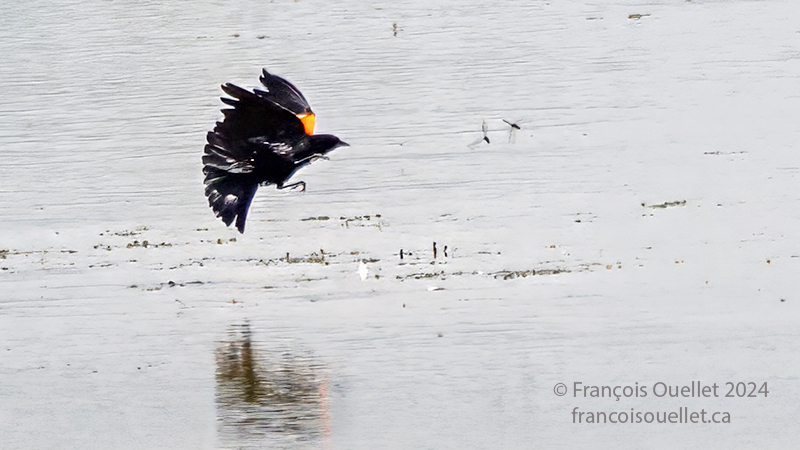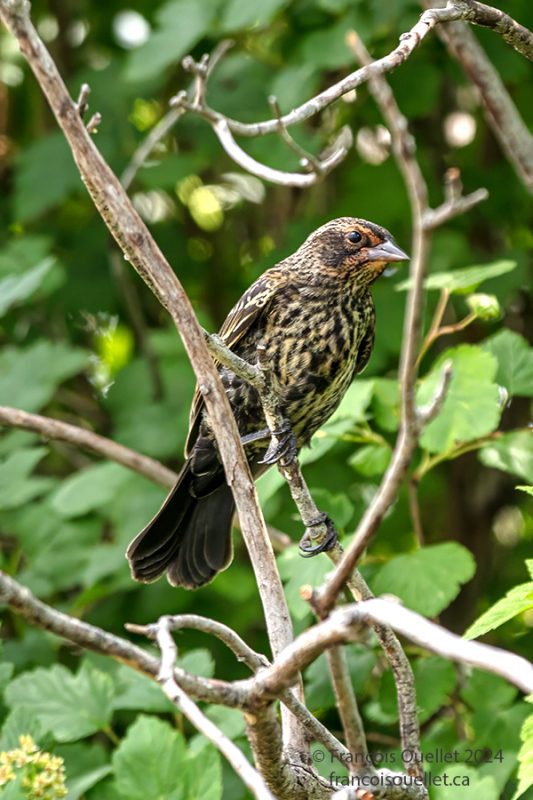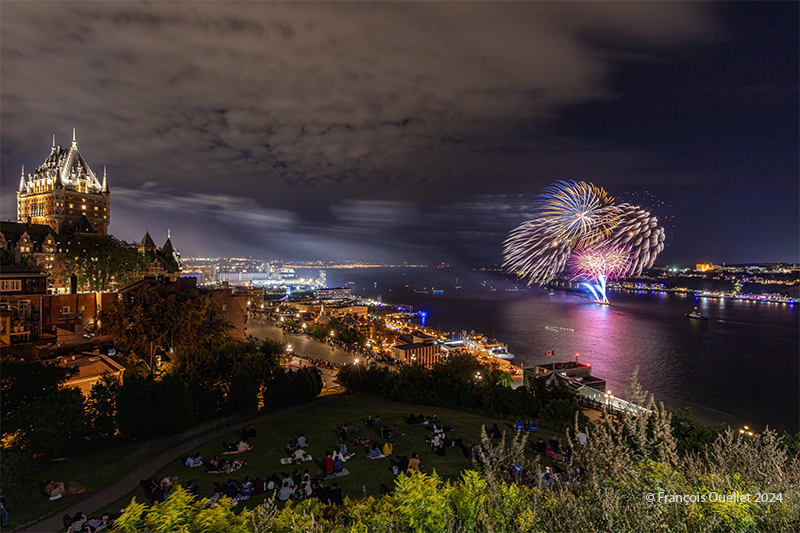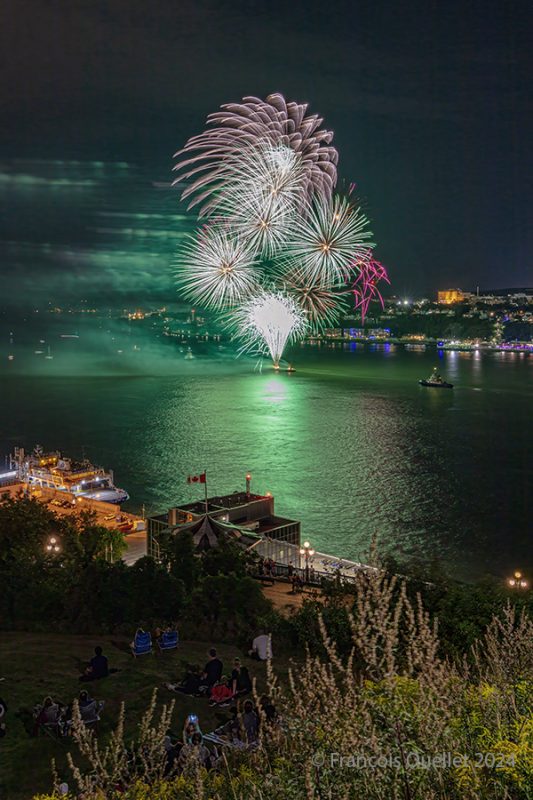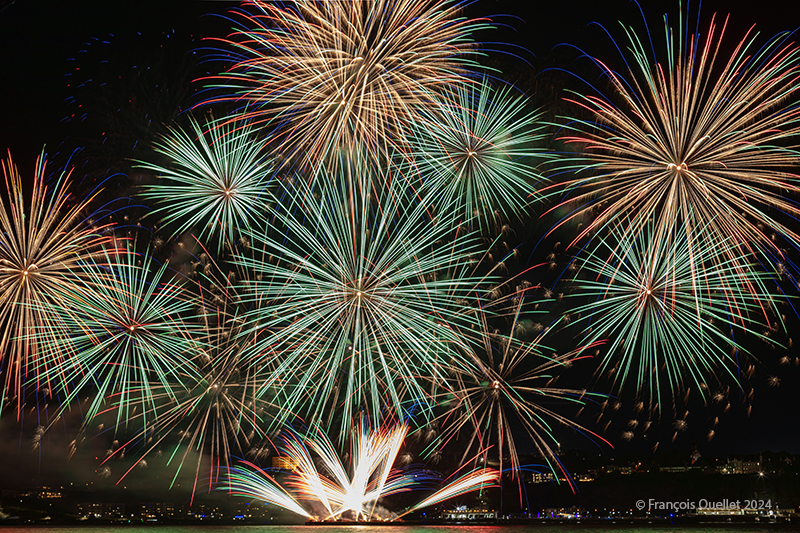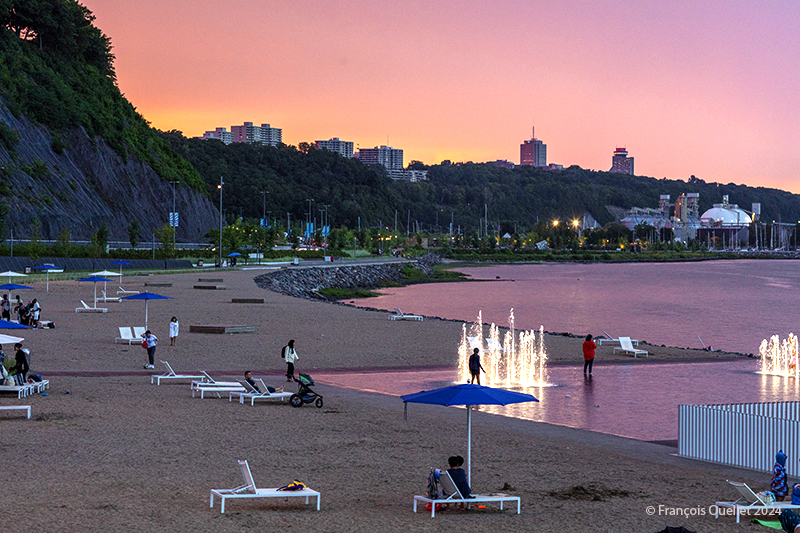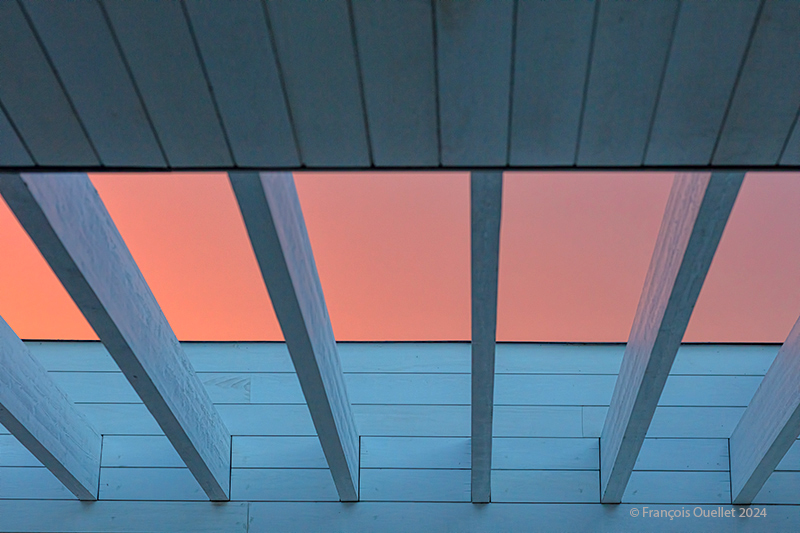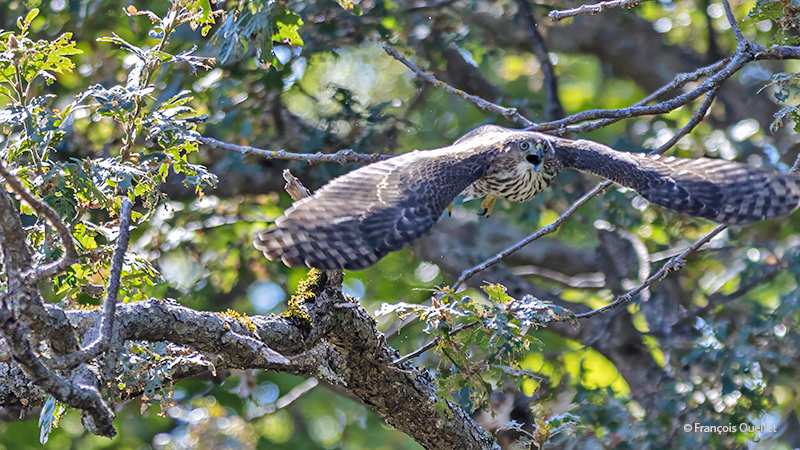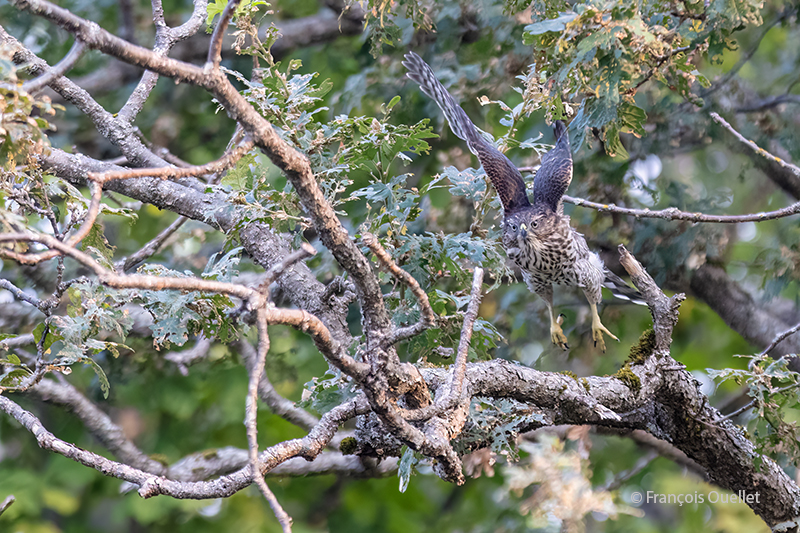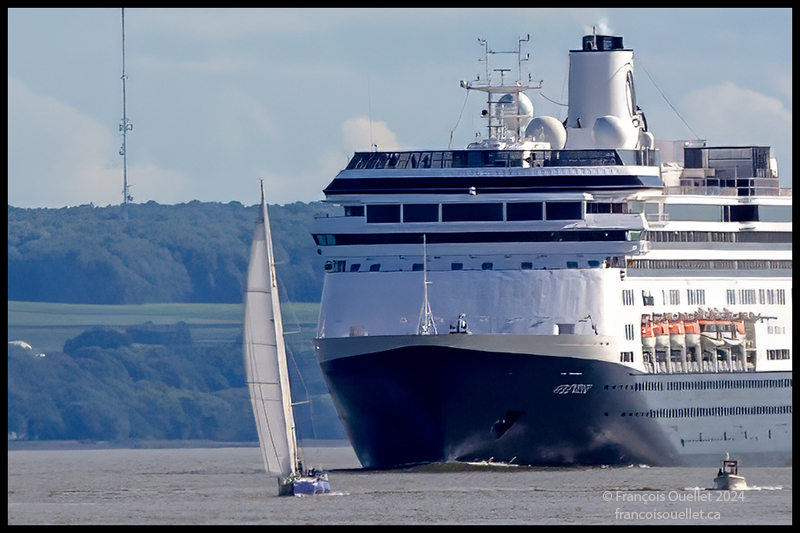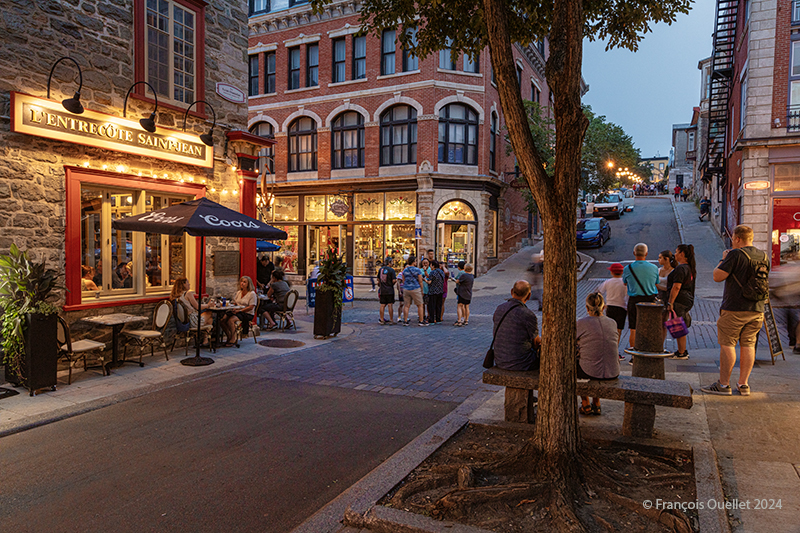
The photo above shows an evening view of the intersection between rue Saint-Stanislas and rue Saint-Jean in Old Quebec. For several months a year, a section of rue Saint-Jean is reserved for pedestrians only. This attracts many tourists. Just behind this popular street is McWilliam Street, with a radically different feel, especially late at night.
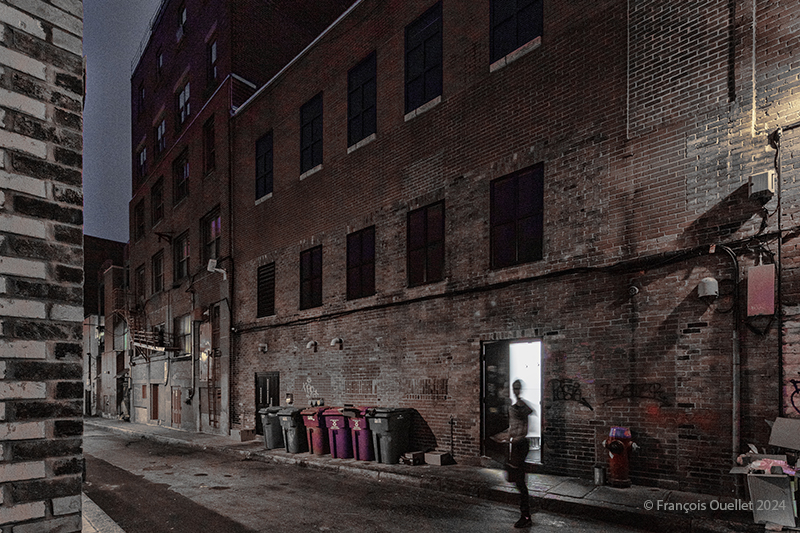
To produce an HDR effect of the location, I plan to stack five photos. I set up the tripod and begin the session. Just as I’m about to finish, a door suddenly opens. A man steps out and lights a cigarette.
I need to capture this very brief moment when the individual is just a stealthy shadow in motion with the intense fluorescent lighting in the background. In this rather dark alleyway, this could generate an interesting effect.
The smoker asks me what I’m doing. It’s an employee on break working for the popular Cochon Dingue restaurant on Rue St-Jean. What a contrast between the modern façade and the back of the same building on McWilliam Street.
At home, HDR processing begins. But it’s impossible to use all five shots together as planned initially. The software combines a closed and an open door at the same time. The result is a kind of butchered wicket door, with almost no light filtering through.
I abandon the idea of an HDR montage and fall back on the single photo where the man is standing in front of the door. I wasn’t counting on this presence, but it adds a touch of humanity to a scene that’s still not very inviting.
Life often presents photography enthusiasts with unexpected opportunities. It’s all about being flexible and capturing the moment, even if it’s not part of the initial planning. Click on the link for more photos of Quebec City and Île d’Orléans in Summer on my blog.
